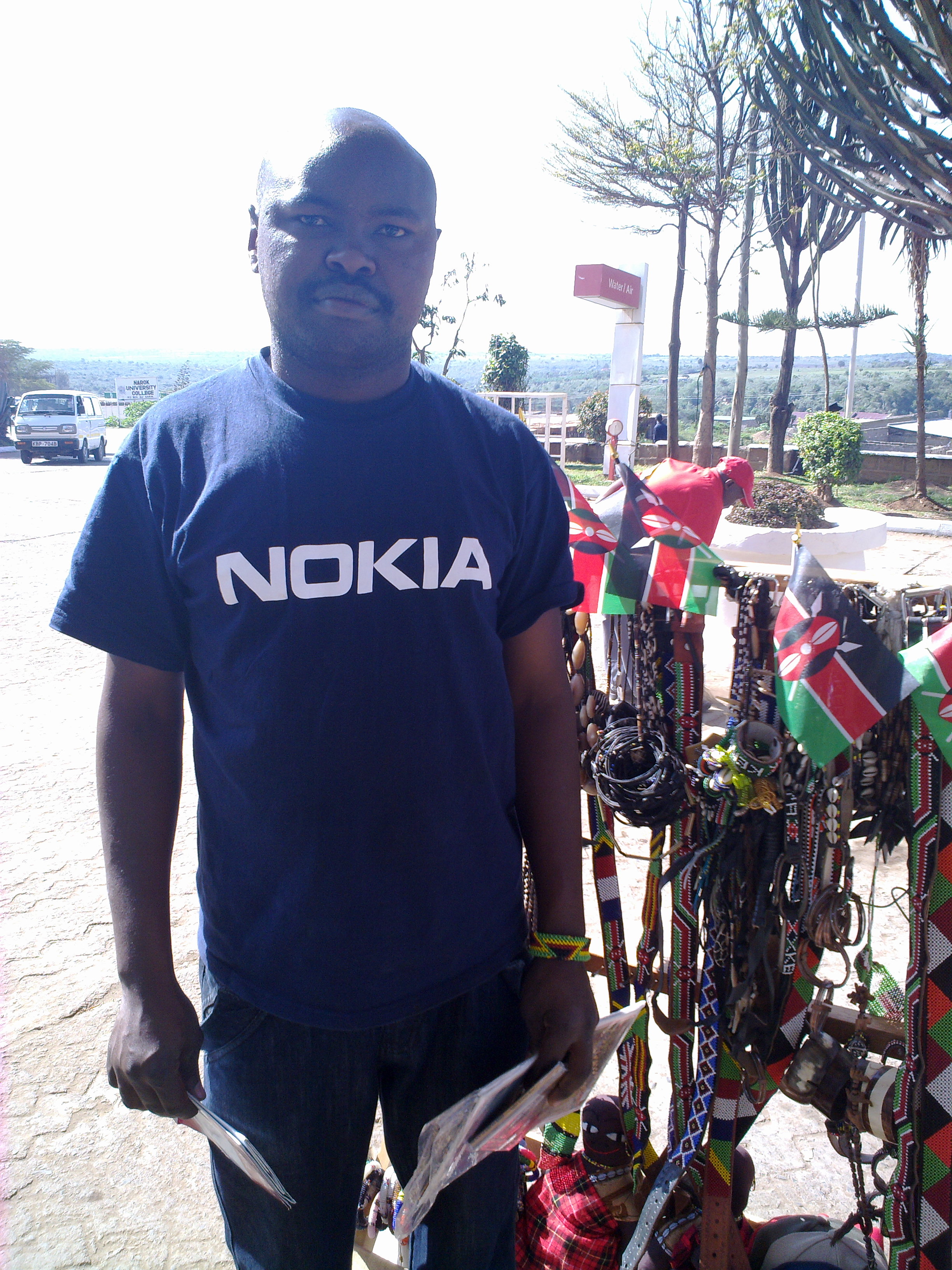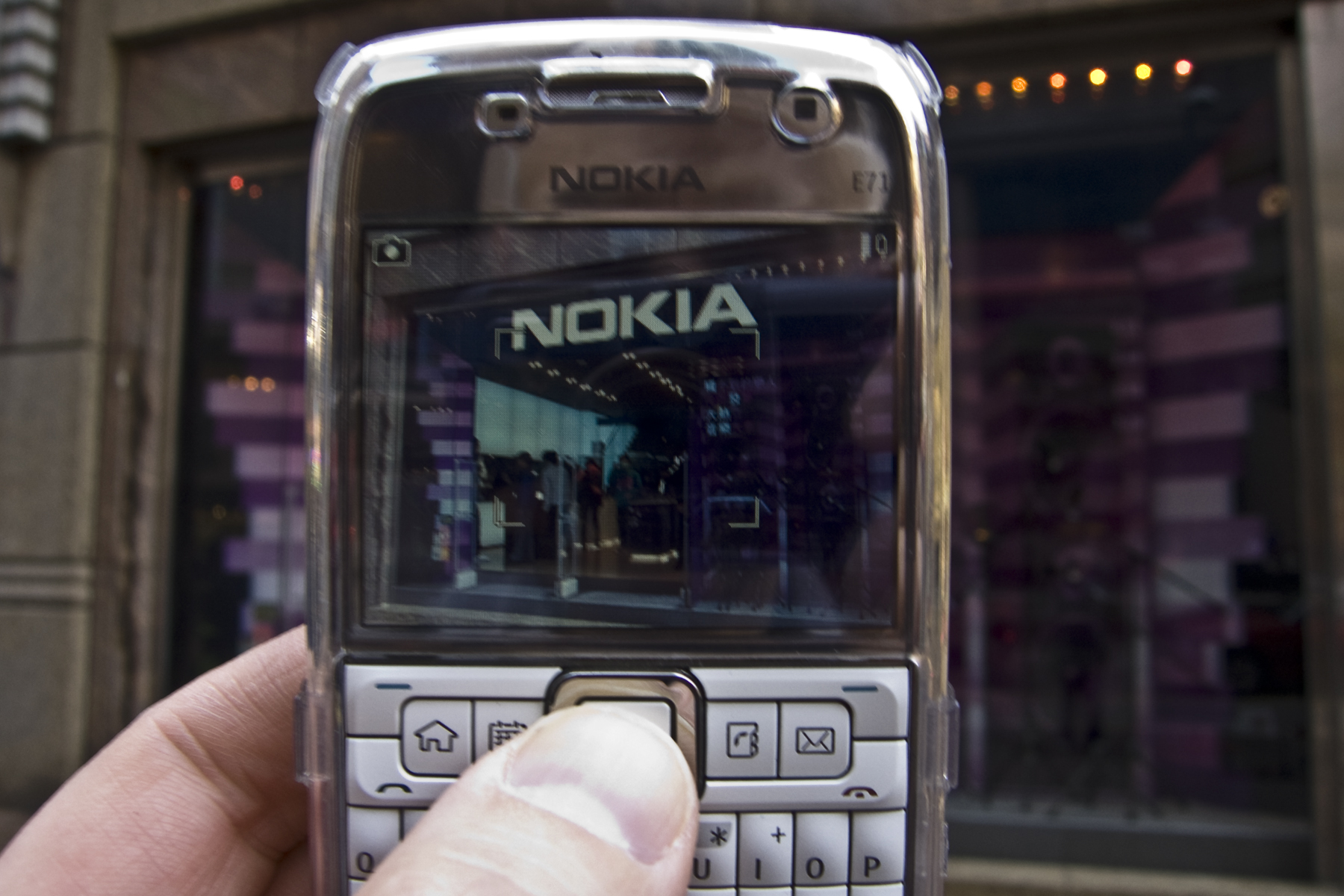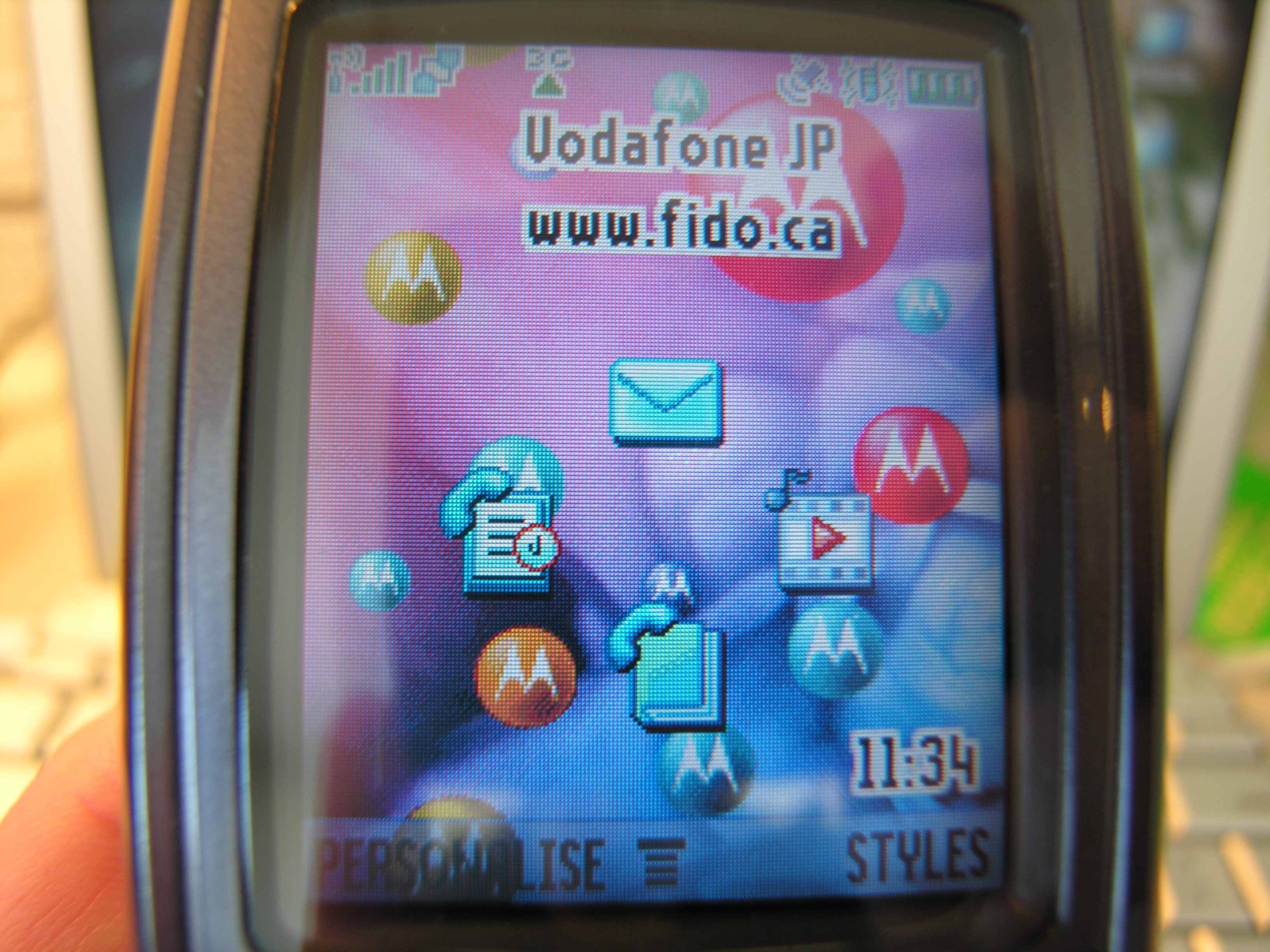A lot had changed in the four years since I had last used my Fido hiptop2 full-time. The biggest news was that Danger, the company behind the hiptop/Sidekick line and responsible for its back-end servers, had been bought up by Microsoft. As the hiptop’s cloud sync solution was a competitor to Microsoft’s Outlook Web Access, the hiptop servers were quickly shut down.
This might explain how Mobilicity was able to procure an untold number of second-generation Sidekick LX devices and sell them with its own custom firmware. Unlike my hiptop2 there was no web login for the Mobiflip, nor was the prescient app store anywhere to be found on the device. There was the excellent Opera Mini web browser and a third installment of the bouncing ball game “Bob”, but that was about it.
I knew all of this going in, of course, and could really only justify my hundred-dollar Mobiflip purchase as a curiosity for what could have been. I brought it along with me to a Mobilicity event, hosted by Howard Chui of HowardForums fame. When I plopped it on a table it was greeted with a round of derisive laughter from the other bloggers in attendance. Clearly the hiptop’s day had come and gone.
Its legacy lives on, however. On-device app stores are now, as we know, de rigueur for any device that calls itself a smartphone. And if you didn’t know, Andy Rubin — co-founder and CEO of Danger, Inc. — was also a driving force behind Android in its early days. He remains in charge of the platform at Google, which can only be a good thing.
]]>I signed up for Mobilicity to trial their network that October, and chose an Android handset to do the job. At launch, Mobilicity’s offerings from Nokia were too pedestrian. And BlackBerry? Been there, done that. I had seen T-Mobile’s G1 (the first-ever Android device) two summers before on the N97 24/7 tour, and followed the rising popularity of the Android platform through the first half of 2010. By the time I bought my first Android device I pretty much knew what I’d be getting into.
Were it not for Android I probably wouldn’t have stuck with Mobilicity through the next year and a bit. For the entirety of that period their signal was so weak in my home that I couldn’t take phone calls. This would have been an instant deal-breaker just a few years prior, but in the age of Skype, Google Chat and mobile VoIP clients I could make do. And once outside the concrete walls of my abode the service was generally great.
Putting up with a weak signal in my condo cut almost two-thirds off my cell phone bill — or to put it another way, Canada’s incumbent telcos had been overcharging me for years. Here’s a breakdown of what I was paying Fido just prior to switching:
- $45 – City Fido voice plan, 3-year contract
- $30 – 6GB data, on a separate 3-year data contract
- $15 – call display, voicemail, 300 Canada-wide SMS
For a grand total of $90 CAD per month. The Mobilicity plan that I signed up for included the following:
- Unlimited North America-wide voice calling;
- unlimited global SMS;
- unlimited data;
- call display, conference calling & voicemail.
All for an insanely low $35 per month, with no contract. It was almost too good to be true.
And now that you understand how I came to be in the possession of my first Android device, this final section of my mobile memoirs will detail how I came to be a full-time Android user.
]]>That November I boarded an overnight flight to London, the first leg of yet another once-in-a-lifetime trip that would take me onwards to Bangkok, Singapore, Taipei and Tokyo.
I was met the next morning in Piccadilly Circus by Tom Hall of WOM World, who graciously gave up his Sunday to give me a personal tour of London and loan me a Nokia for the destinations that lay ahead. Over brunch an N900 and N97 mini appeared on the table, plus a handset that was earmarked for me: the N86. Truth be told I was initially more drawn to the N900, being a desktop Linux user and all. But the N86 quickly proved to be the better choice — in fact, its camera was so good that my standalone point-and-shoot didn’t leave my suitcase for the next two weeks.
In Bangkok I took spectacular photos of the gold and purple Grand Palace and documented my first-ever tuk-tuk ride on video. I was also lucky enough to catch Al Pavangkanan, whom I’d met that summer on the N97 24/7 tour. Thanks to him I got to see Bangkok’s two famous IT malls, Pantip Plaza and MBK Center.
In Singapore I documented my first-ever durian fruit and a sunset view of the city skyline aboard the Singapore Flyer. I also got stood up by someone I was supposed to meet there. But I’m over it, really. More importantly, I snagged a local SIM card with unlimited data — a good thing, because by my fourth day abroad I had already burned through a two-week data roaming package from my carrier back home.
In Taipei I scored another local SIM, and kind of went insane with Qik, the live streaming video app that I first used on my E71. I kept it running over an entire breakfast in my hotel’s restaurant (much to the horror of the other guests there, I’m sure) and streamed an end-to-end walk-through of a night market. I’m pretty sure this is what would eventually win me that white N97 from the company.
In Tokyo there was sadly no option for local unlimited data. I spent about half an hour in a DoCoMo service centre before giving up and walking out, having come to the conclusion that the staff there were too afraid to talk to me. I also had a moment with one of the N86’s few shortcomings, Nokia Messaging. Nokia used to have a regular email client that worked great. Nokia Messaging was their “improved” next-generation email experience, designed to mimic the push email you could get on a BlackBerry. But this was no BlackBerry — quite possibly due to the low amount of RAM, Nokia Messaging on the N86 was crap. Deep within the bowels of Shibuya station I spent what seemed like an eternity struggling to find an email with directions to a dinner engagement; then I remembered that I could find that same message using a free email-over-WAP service.
Despite that little hiccup I ordered an N86 to call my own almost as soon as I got back to Toronto. The next spring it would accompany me on a visit to Moscow and a high school friend-turned-diplomat. That summer I got invited on another WOM World tour, this one promoting the N97mini to Canada. In a tricked-out recreational vehicle from Montreal to Toronto I got to hang with a Mr. James Whatley, whose 2009 bungee-jump over Victoria Falls with an N86 strapped to his wrist had first piqued my interest in this device.
The swan song for my N86 was a Kenyan safari in September of 2011. I had been to Mother Africa twice before and knew how popular Nokia phones were there. But I was caught completely off-guard by the presence of Android devices, at least in Nairobi. Every local carrier had not just one but an entire selection, from the cheap and cheerful to the high-powered and high-end. Kind of ironic considering I had left my Android phone at home and brought the N86 just for this trip.
That’s right, this unabashed Nokia fanboy was now a full-time Android user.
]]>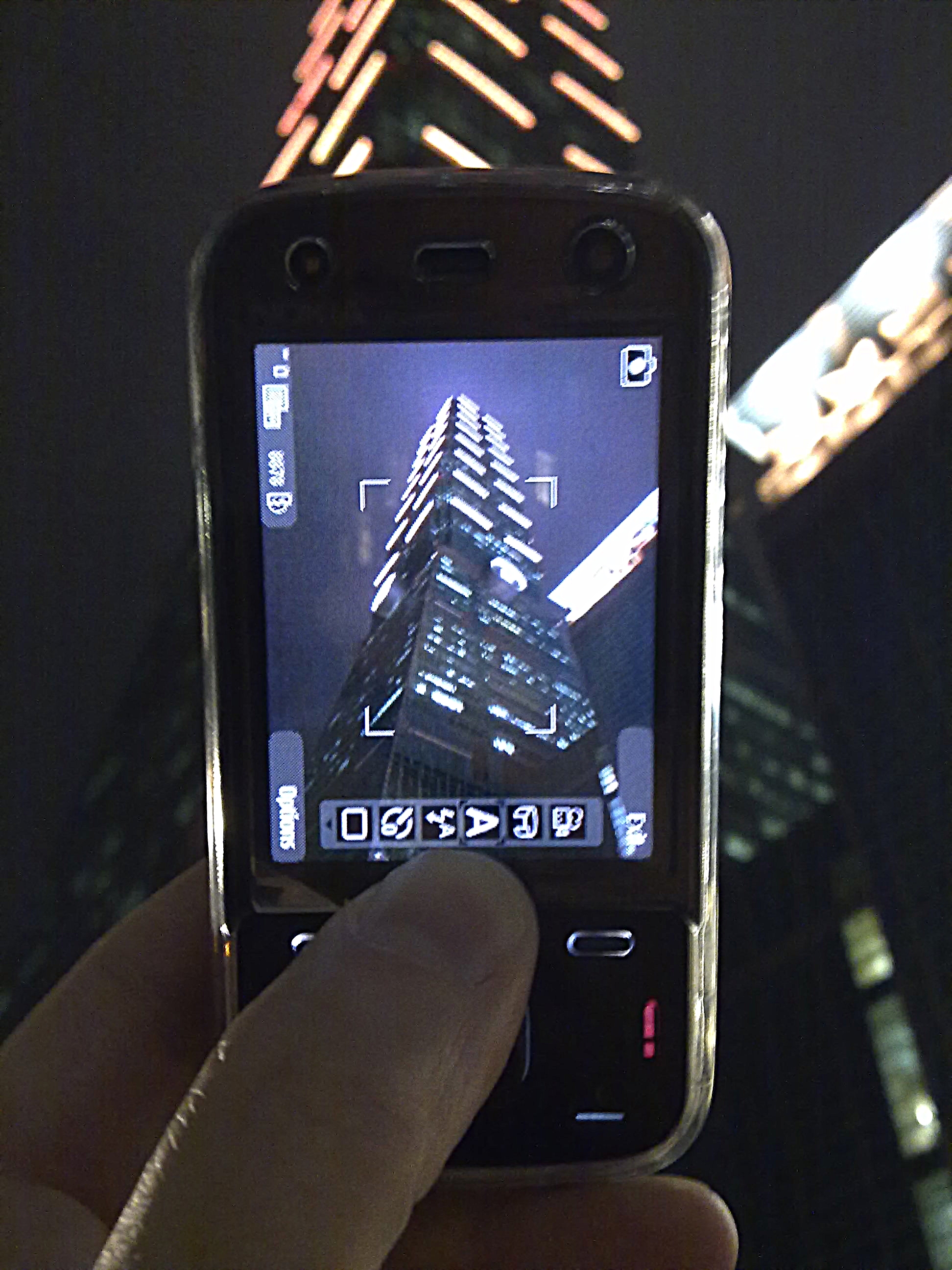
Here’s the Nokia N86 outside of Taipei 101 in November, 2009. WOM World graciously loaned me this legendary Nseries device for a points-burning run around the world. Okay, mostly Asia.
My interest in this particular Nokia can be traced a bit further back to this photo, in which a Mr. James Whatley bungee-jumps over Victoria Falls with an N86 strapped to his wrist. Now that’s a rockstar blogger…
A hallmark of the N86 was its full-frame video sensor; though output was limited to 640×480 pixel VGA resolution, you could use the entire 8 megapixel sensor for zooming, as per the example above.
In addition to that pan-Asian jaunt my N86 also travelled with me to Moscow in the spring of 2010, and took some fantastic photos there.
And in September of 2011 my N86 accompanied me on a trip to Kenya. Nokias were, as you’d expect of the developing world, very popular in Mother Africa. But I was entirely caught off-guard by the pervasiveness of Android in shops and in ads on local TV.
Ah, but I’m getting ahead of myself…
]]>The N79 was a lot like Sony Ericsson’s T610 in that it had no groundbreaking features of its own, but instead wrapped up the innovations of the day in an attractive and affordable package. Though small enough to fit into a pants pocket the N79 had a 5 megapixel camera with lens protection, plus a front-facing camera for videoconferencing. 3G and WiFi radios were at the ready to serve your data needs. Navigating through the old school S60 UI was made easier (or at least different) by the innovative Navi™ wheel. What I liked best was the return of Nokia’s Xpress-On covers — updated for the 21st century with some clever technology that made the background colour of the screen match the back cover of the phone. Had I kept my N79 longer I would have a fairly large collection of Xpress-On covers by now.
But I didn’t. You see, regressing from a qwerty keypad to a T9 number pad was made considerably more difficult by the N79’s awful buttons. They were flat, offered almost no feedback and felt extremely cheap. Hammering out text messages, a breeze on my Eseries phones, was now a painful chore.
Still, I was definitely won over by what Nseries had to offer — in particular Nokia’s gaming platform of the day, called N-Gage. A favourite title was Mile High Pinball, my first modern-day gaming addiction since Bejeweled on my Treo almost a decade prior. Imagine a pinball table that extended infinitely and you get the general idea.
Though the days of N-Gage were numbered, Nseries devices were getting better and better. My N79 got to tag along with me on a points-burning mission around the world in November of 2009; sadly, it spent most of that trip in my suitcase, sidelined by the Nseries that would take its place as soon as I got home…
]]>
Here’s Nokia’s N79 — a dummy model showing some available options for Xpress-On covers that came with. Changing the back cover on your N79 would also change the background colour on your home screen. Clever.
I played with an N79 during the N97 24/7 tour and was so enamoured with it that I started poking about for one soon as I got home…
… And thanks to an eBay auction I soon had myself a brand-new, factory unlocked N79 to call my own.
Here’s the N79’s Navi™ wheel in action, a neat feature that in no way excused the horrible number pad underneath — which is a real shame, since everything else about it was great.
As this was my first-ever Nseries device, I finally got to use my N-Gage account. And Mile High Pinball was far and away my favourite title on Nokia’s ill-fated gaming platform.
]]>By October of 2008 I had trialled a variety of smartphones from Nokia’s WOM World. The N82, N95 (8 GB version) and E90 had all come and gone. All of them were fine devices, but not a one threatened an early retirement for my E61i. The E71 was a different story, being the official update from Nokia and all. It was smaller, yet had the same screen resolution and a better qwerty keypad. The camera had autofocus and a flash, and best of all there was a version with 3G data service tuned for the Americas. The lanyard loop sealed the deal.
3G data became a lot more useful when Fido, my carrier, started selling Apple’s iPhone 3G — and offered a 6 GB/month data package for $30 CAD. It was still a rip-off, to be sure, but at least it was better than the 3 megabytes I was getting for $25 just two years prior. It was around this time that I started using an app called Qik to stream video from my E71. The results weren’t stellar, but it bears repeating: in 2008 I was streaming live video to the Internet from my mobile phone.
Another S60 innovation was an app called JoikuSpot, which enabled my E71 to broadcast access to my cellular data via WiFi . Such things are taken for granted today, but in 2008 the idea of tethering your phone to a laptop instead of using an expensive hotel Internet connection was the stuff of magic. Only problem was that JoikuSpot, even the paid premium version, was a bit finicky about providing a stable connection. But the idea was bang-on, even if the execution was sometimes lacking.
My E71’s star turn was a week in Hong Kong to ring in 2009. I booked that trip in August of 2008; students of economic history will recall how the global economy kind of went to shit the following month. Despite the doom and gloom I resolved to enjoy myself, and my biggest indulgence by far for that trip was the data roaming fees. I made a pilgrimage to the local Nokia Flagship Store, where I tried the new flagship N96 for the very first time. I would end up trialling that device from WOM World the following month, but it wouldn’t woo me away from my E71.
Truth be told, my most vivid memory of this vacation had nothing to do with the phone. Someone at my hotel had pegged me as some kind of patsy, and sent no less than five, shall we say, “working girls” to my room over the course of an afternoon. Serves me right for blogging instead of taking in the sights, I guess.
My E71 came along on another, more fateful trip in the summer of 2009, one that would put it out of the spotlight and pretty much change my life forever…
]]>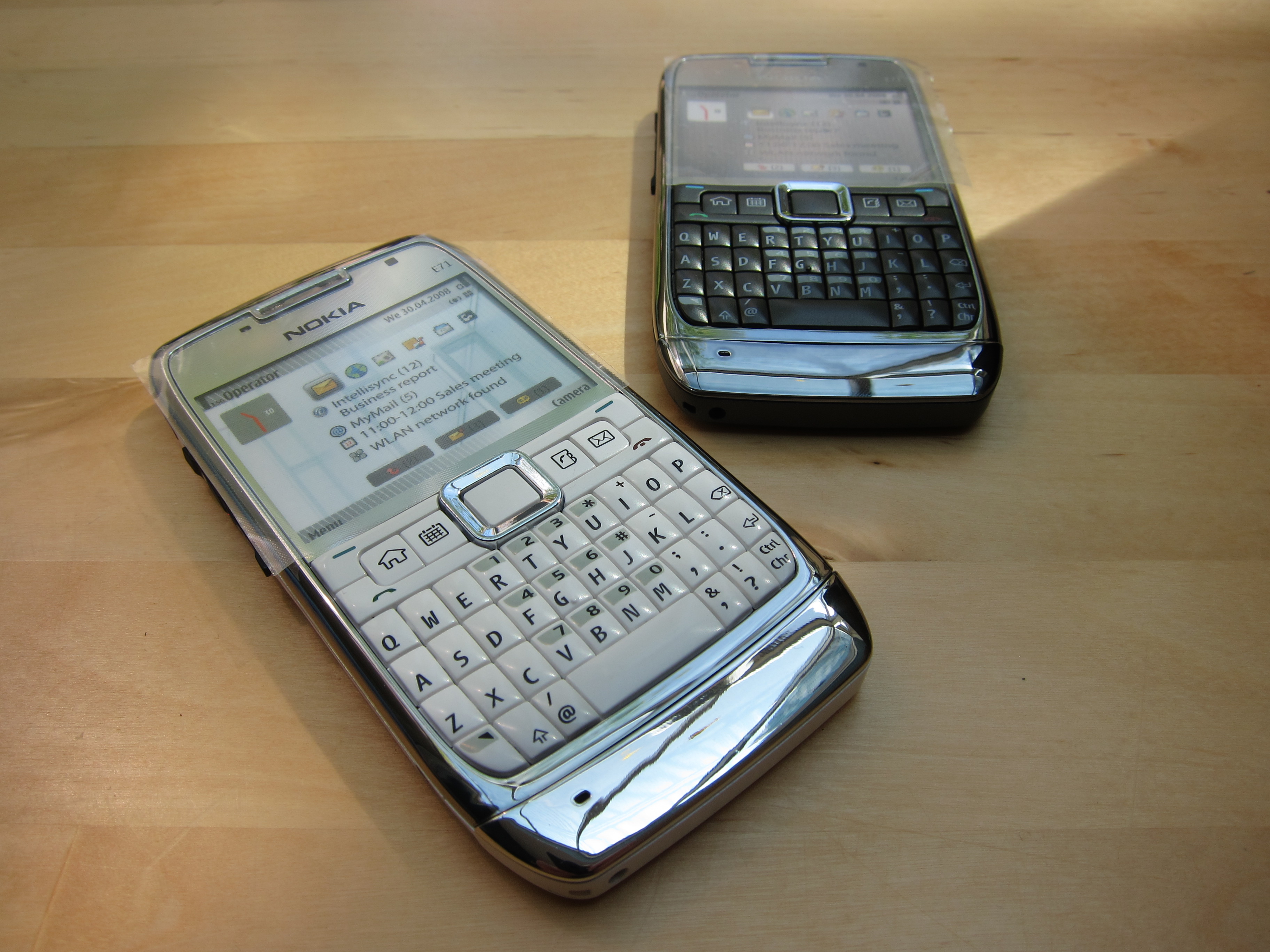
By early 2008 my penchant for collecting dummy phones — like the pair of Nokia E71s you see above — had reached its “irrational exuberance” phase. A photo of my white E71 can be seen here.
The E71 was a logical upgrade from my E61i. That I got to trial it before buying one was an added bonus. Thanks, WOM World!
Here’s my E71 outside the Nokia Flagship Store in Hong Kong, circa January, 2009. More photos from that trip are available on Flickr.
I took a lot of photos with my E71, but this one is far and away my favourite. Nobody believed me when I told them it was taken with a camera phone. My first impressions of the E71’s camera are also available on my old blog.
Video output was limited to QVGA at a paltry 15 frames per second, but thanks to an iPhone data plan from Rogers and an app called Qik I was able to stream live video to the Internet (!) The clip above is my very first, from December of 2008.
]]>There was just one problem: The damned things didn’t work.
Okay, that’s not entirely fair — I was able to send and receive text messages, at least. But repeated attempts to get the web browser to connect to something, anything, failed. Nor could I make either of our A835s do that other thing mobile phones are supposed to do. What was that again… oh right, make phone calls.
The handsets were butt-ugly, especially for Japan. Perhaps it was a good thing that the data didn’t work; I’d sure hate for the wrong person to see me use it, and be chased out of Akihabara by a jeering mob of keitai otaku (mobile phone geeks). I did manage to snap some blurry, pixelated VGA-quality photos here and there — certainly nothing worth printing out and getting framed.
What I remember most about this phone was using it to text my girlfriend in a frantic attempt to find her among the many and confusing aisles of Shibuya’s Tokyu Hands “Creative Life” store. When I finally found her she told me that all the while her phone had been in her purse and turned off, and why was I asking anyway?
]]>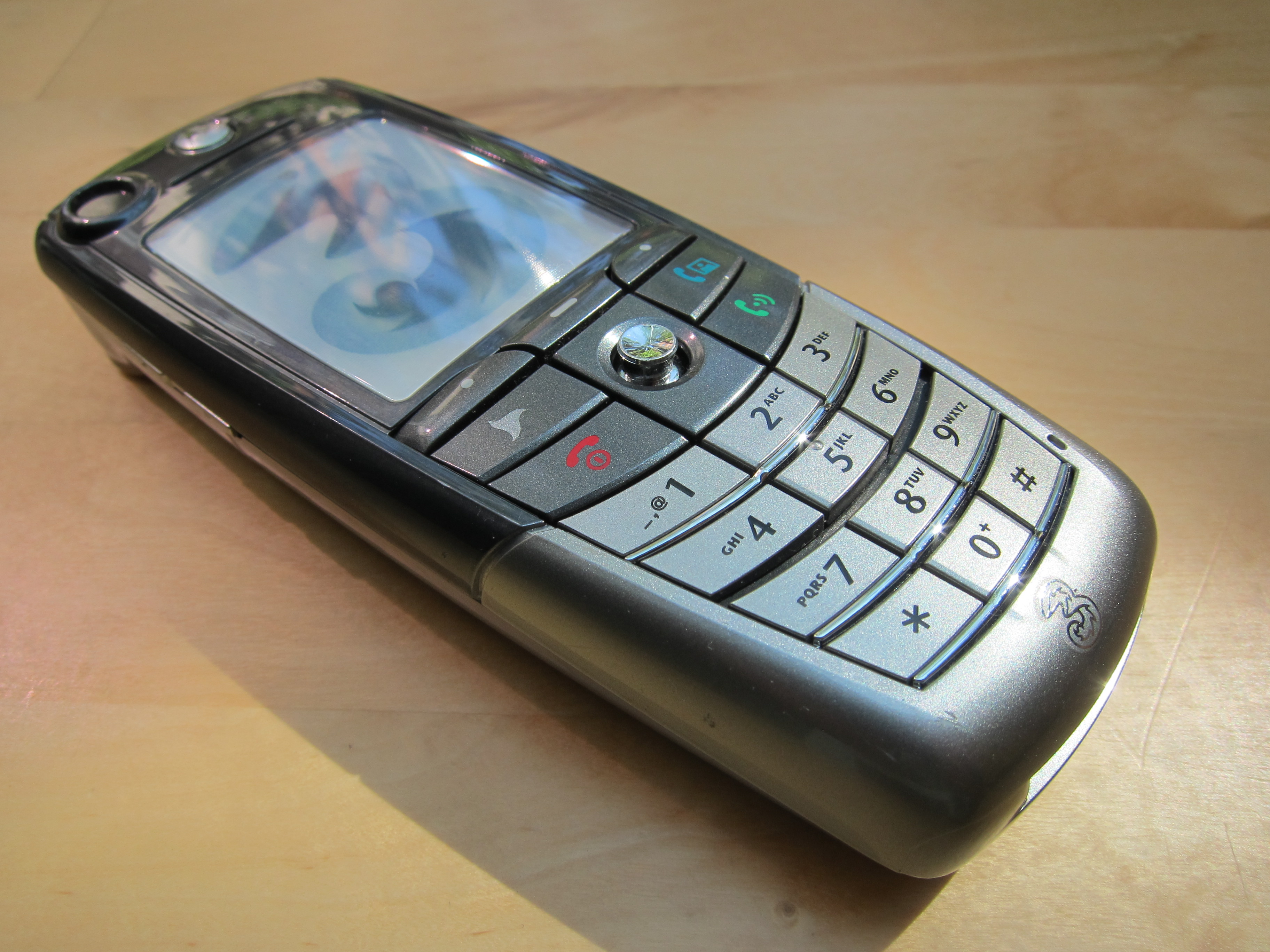
Here’s Motorola’s A835, my first-ever experience with a 3G phone. And boy, did it ever suck. My then-girlfriend and I rented a pair of them from a Vodafone kiosk at Tokyo’s Narita airport in January, 2006. The one in the photo is a 3-branded dummy, in case you wondering.
Despite being unlocked and able to accept my Fido SIM card, I couldn’t get this thing to use data or even make phone calls. Best I could do was send SMS. In the midst of the world’s most advanced mobile phones this was fairly humiliating.
The browser didn’t end up making a connection. It never did.
The A835 was good for one thing: it gave me an opportunity to hear that craptacular “Hello Moto” ringtone for the first time. Hardly enough to justify two phone rentals and international text surcharges, though.
]]>
